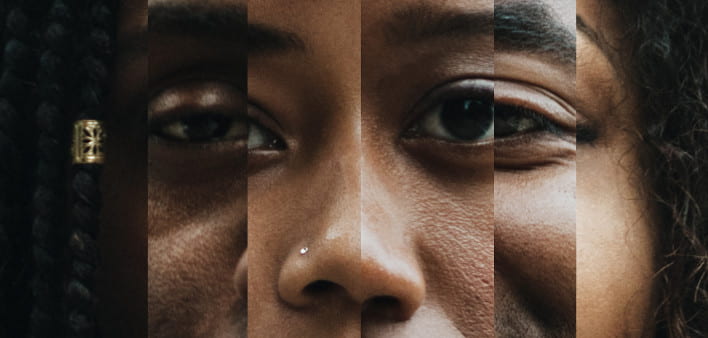The Medical Journalism Club recently published the following editorial in the Hyde Park Herald, Pg. 5.
Amidst the international push for racial justice brought about by social equity movements like Black Lives Matter and Stop AAPI Hate is a growing reckoning of systemic racism. Three epidemics that have hit Chicago communities especially hard – Covid-19, gun violence, and HIV/AIDS – demonstrate how People of Color face a wider health burden than what exists for other demographics.
On July 17, 2014, Eric Garner cried “I can’t breathe” eleven times before losing his life to a police officer. His cries reverberated globally, reigniting the movement to rid the criminal justice system of its racist practices and officers. The same cries of “I can’t breathe” would sound six years later, in a different context, but with the same underlying theme of People of Color becoming the victims of a system that primarily benefits privileged communities.
Dr. Susan Moore, a physician and Covid-19 patient, took to her Facebook account from her hospital bed on December 4, 2020, to tell her story about her experience with a physician. Dr. Moore alleged that due to racial bias, her physician failed to take seriously her reports that she was short of breath and experiencing pain. Dr. Moore passed away about two weeks after telling her story to the world. Unfortunately, it seems that every day brings another story of patients who, like Dr. Moore, need to exert energy to prove the validity of their experience before it can even be addressed. These recurring experiences help explain the racial disparities in Covid-19 outcomes. The Centers for Disease Control and Prevention (CDC) reports that compared to the rate of death from Covid-19 for White people, the rates for Native American people, Black or African American people, and Hispanic or Latino people are 220%, 190%, and 210% greater, respectively. For Asian people, the rate is 10% less.
As global Covid-19 cases surge, a new wave of gun violence is sweeping the nation as well, once again leaving racial disparities in its wake. Long-standing tension between Chicago communities, elected officials, and the Chicago Police Department have turned the public eye to more disputes and less problem-solving. Meanwhile, youth pay the lethal price. On September 21, 2021, Simeon High School mourned the loss of two bright 15-year-old students: Jamari Williams, an aspiring football player, and Kentrell McNeal, a gun violence activist for GoodKids MadCity. Jamari and Kentrell are only two of the countless lives lost to the gun violence epidemic: an epidemic that, like HIV/AIDS and Covid-19, proves more dangerous for People of Color. Everytown for Gun Safety, a national gun violence prevention organization says that “Black Americans are disproportionately impacted by gun violence. They experience 10 times the gun homicides, 18 times the gun assault injuries, and nearly 3 times the fatal police shootings of white Americans.” Furthermore, data from the Johns Hopkins Center for Gun Violence Prevention and Policy reveals that African American youth are 14 times more likely than White youth to lose their lives to gun homicide.
These disparities in Covid-19 cases and gun violence incidents are not unique to the twenty-first century. In the 1980s, early on in the HIV/AIDS epidemic, a diagnosis was all but a “death sentence.” But over 40 years after the beginning of the epidemic, with the introduction of preventative medication like pre-exposure prophylaxis (PrEP) and the treatment of antiretroviral therapy (ART), a critical barrier to good health for people with HIV is sustained access to affordable health care. Therein lies the inequity.
Health Economist Austin B. Frakt speculates that racial minorities often receive worse care than their nonminority peers due to “lower rates of health coverage,” “communication barriers,” and “racial stereotyping based on false beliefs.” In recent years, the CDC has found the disparity in outcomes to be as significant as a 10-15% less chance of achieving viral suppression for Black people as compared to Hispanic and White people. Unlike the medical advancements of the past 40 years of the HIV/AIDS epidemic, little has changed regarding which demographics face the most significant health disparities.
During every public health crisis, People of Color face the largest health disparities, and it is no coincidence. To remedy disparities, “seeing in color” is crucial to illuminating the gaps between health outcomes for different demographics. But race is just a fraction of the picture, as one can view public health through the lens of gender, sexual orientation, religion, disability, or socioeconomic status. Each lens brings to light something that a single patient’s medical chart cannot accomplish alone and helps illuminate that the people to whom society turns a blind eye are fighting an uphill battle for their health. And as it turns out, systemic racism fosters a system in which who we are, how we identify, and how others label us are key determinants in determining how healthy we can be.
Image: https://www.poz.com/article/racism-medical-settings-may-reduce-willingness-take-hiv-meds

